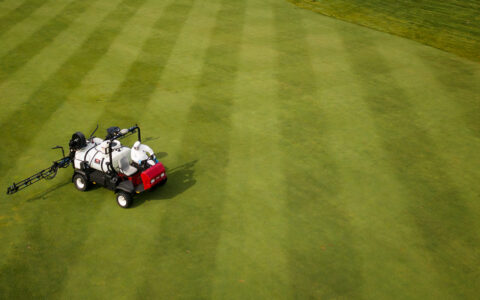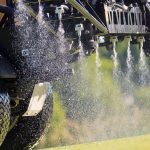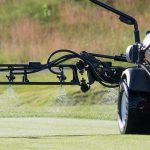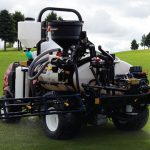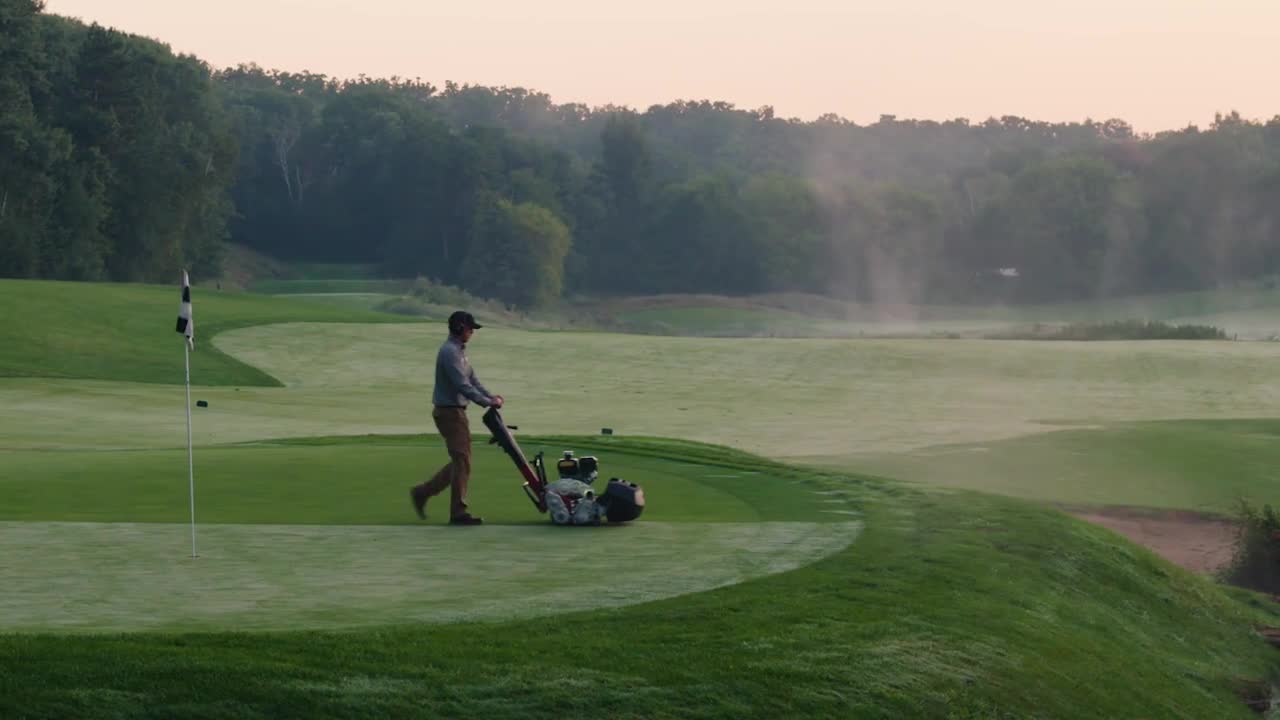Maintaining Your Sprayer: Common Problems and How to Prevent Them
UPDATE: We have a newer sprayer maintenance article with troubleshooting tips.
Maintaining your sprayer not only helps extend the life of your machine, but also allows you to get the best performance from the expensive chemicals you apply to your turf.
In this article, we’ll take a look at some common problems and how to avoid them so you can improve the application efficiency and longevity of your Toro Multi Pro® sprayers. From proper cleaning to picking the right nozzle for the job, these tips will help you keep your sprayer performing its best.
Cleaning and Storage
It may sound simple, but keeping your sprayer clean is an important way to prevent many potential problems. See your operator’s manual or chemical label for complete instructions and keep these best practices in mind:
- Always triple-rinse. Spray the tank out completely three times, or until the fluid runs clear. All accessories should be rinsed out as well. This will help keep debris out of the tank and ensure that you don’t mix chemicals from different applications.
- Always neutralize according to the recommendations of the chemical manufacturer(s) in addition to rinsing. Neutralizers are still needed to “clean” the machine.
- Clean the OUTSIDE of the sprayer to prevent corrosion caused by chemical residue and ensure a safer work environment by avoiding direct human contact with chemicals.
- After the full system rinse, follow with pump conditioner for long-term storage (one week or more).
Choose the Right Filters
Filters are another key component that should not be overlooked. Filters should be inspected and cleaned regularly to make sure they’re intact and not plugged to avoid problems with the flow or application rate.
It’s also critical to make sure you are using the correct filter for the application. Different filter sizes are recommended based on criteria such as the viscosity of the fluid, nozzle size and application rate.

There are four main filters in a Toro sprayer:
The basket filter sits in the tank as your first line of defense to keep bigger debris out of the spray tank and spray system. There is only one basket filter mesh size for Multi Pro sprayers.
The suction filter protects the pump and other components downstream. It’s located on the top of the tank, in the suction line going to the spray pump. If this filter becomes partially blocked, it can cause a restriction in the suction line. This will result in erratic flows at higher volumes, reduced or no flow/pressure, or pump cavitation — greatly shortening the life of the pump. If you notice pulsing of the intake hose against the tank, it’s a telltale sign of a plugged suction filter.
There are three different mesh sizes for the suction filter: 30 mesh, 50 mesh, and 80 mesh. It is recommended to size the suction filter based on the nozzle size, the viscosity of the chemicals being used, and the chosen application rate. For thicker fluids, use a less dense mesh. For thinner fluids, use a finer mesh.
The pressure filter protects the valves in the spray system. It’s located after the pump and before the valves. If this filter becomes blocked, it will restrict flow, and system pressure will increase until the pressure filter ruptures. There are five different sizes of pressure filters: 16 mesh, 30 mesh, 50 mesh, 80 mesh and 100 mesh. It is recommended to size the pressure filter according to the nozzles that are selected, as well as the viscosity of the fluid.
The tip strainer (or nozzle filter) is installed behind the nozzle in the turret. It’s designed to protect the nozzles and increase their lifespan. This is the only filter that is considered optional. If nozzle filters are installed on the sprayer, they need to be cleaned regularly and maintained to extend the longevity of the nozzles. A partially plugged nozzle filter will cause distortion of the nozzle spray pattern, diminished volume from the nozzle or inconsistent application rate.
The filters used in Toro Multi Pro sprayers are color-coded according to the mesh size for quick identification and selection. Please see Service Bulletin VE 01-01 for additional details.

Nozzle Selection and Spraying
All Toro sprayers have the same basic components. The tank supplies the fluid, the pump provides the flow, and the nozzles provide the restriction (or pressure). This is where the rubber meets the road. The relationship between the nozzles and pressure is key to sprayer performance, accuracy and the rate fluid is applied to the turf. Each nozzle is designed to flow a certain volume of liquid at a certain pressure. In other words, they are calibrated — and we can use the calibration data to select the proper nozzle size for the sprayer application.
Why is this important? If the pressure is too low for the nozzle, you could see a condensed spray pattern and bigger droplet size. If the pressure is too high for the nozzle, the spray could become a mist that doesn’t get all the way to the ground. The pressure at which the nozzles are calibrated is the optimal pressure for the nozzles, ensuring the correct pattern and proper dropped size.
Nozzles are color-coded to ISO standards. Each color indicates a specific volume at a specific pressure. The Toro Nozzle Selection Guide (12-082-T) is an excellent tool to help you determine how much fluid a nozzle will flow at a specific pressure. For even simpler nozzle selection, our online nozzle selector app is another resource that makes it easy to find which nozzles you need.
Nozzles wear over time, and wear rates depend on the type of material sprayed through the system. So, how do make sure nozzles are performing uniformly and not worn out or damaged? A sprayer calibration catch test may be in order.

This test is performed using the Nozzle Reference Chart and a calibrated container (also called a “catch jug”). It typically involves setting the machine at 40 psi and catching the fluid that comes out of a nozzle for 30 seconds in the container. The test is performed for each nozzle across the boom. Compare the results against the Nozzle Selection Guide for output in ounces per minute, and if any nozzle varies by more than +/-5%, all the nozzles should be changed as a set.
Cleaning, Storage and Maintenance Are the Key
Without proper sprayer cleaning, storage and maintenance practices, your sprayer could be damaged by corrosion, cavitation and more — eventually leading to problems that compromise performance. Additionally, pump maintenance is extremely important. On pumps, the fittings should be greased after every 50 hours of pump operation. We also recommend a 400-hour pump inspection. (See your operators manual for more detailed instructions on pump lubrication and maintenance.)
It may sound like we’re repeating ourselves, but we can’t emphasize this enough – cleaning, storage and maintenance is key. If meticulous attention is given to cleaning the spray tank and the traction unit itself, you will maximize the useful life of your sprayer and maintain a clean, safe work environment for your operators.

If you have any questions about sprayer maintenance, contact your local Toro distributor. Additional sprayer resources, such as our Toro sprayer calibration tool, can also be found in the Educational and Technical Reference section under Support on our website.

